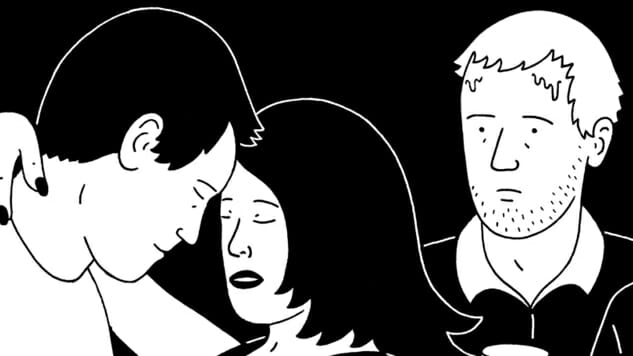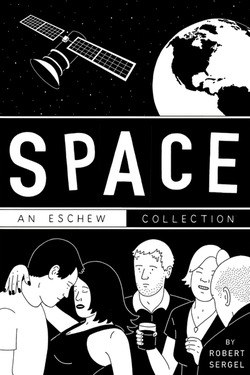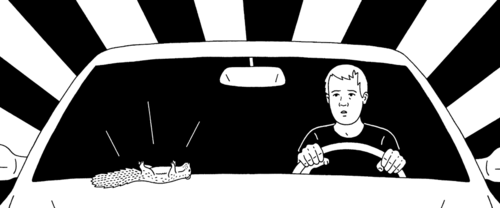Robert Sergel’s Space: An Eschew Collection Explores the Vast Orbits Between Its Characters
Comics Reviews
Writer/Artist: Robert Sergel
Publisher: Secret Acres
Release Date: April 5, 2016
 This nice, pocket-sized collection of Robert Sergel’s Ignatz-nominated Eschew comics emerges during a particularly loud month of new comic releases. And that’s a shame. Sergel’s comics are the equivalent of short stories, especially the midcentury type associated with The New Yorker. They don’t use many words or obvious emotions. Little happens by most storytelling standards, and the plots’ meanings and themes are often left to interpretation. But they suggest just enough to allow for some fun analysis in an English class.
This nice, pocket-sized collection of Robert Sergel’s Ignatz-nominated Eschew comics emerges during a particularly loud month of new comic releases. And that’s a shame. Sergel’s comics are the equivalent of short stories, especially the midcentury type associated with The New Yorker. They don’t use many words or obvious emotions. Little happens by most storytelling standards, and the plots’ meanings and themes are often left to interpretation. But they suggest just enough to allow for some fun analysis in an English class.
Other than a general aura of understated malaise, these stories are quite contemporary, although obvious signifiers of the present are rare. A cell phone, laptop and video game system make cameos, but Sergel’s panels are clean and uncluttered—even by color. Many comics artists work in black and white because it’s cheaper and easier, but Sergel seems to enjoy its possibilities for careful arrangement within a limited format. His use of a delicate pattern here and there against an exceptionally flat, sparse background calls attention to the design in a subtle way. The few stories that consist only of linework without fills aren’t as strong as those that feature areas of black and, often, black on black, set off by fine white lines. Entry “My Famous Grey Sweatshirt” is an exception, utilizing a series of different geometric background elements for visual variety (bricks, board siding, a sidewalk, polygons meant to suggest cold, rounded nested shapes that convey warmth and comfort).

Space: An Eschew Collection Interior Art by Robert Sergel
Sergel’s visuals fall in the same school as Nick Drnaso and Chris Ware (simple lines, marginal facial detail), but he shies away from positioning his characters to directly face the reader, a device from talking-head-style documentaries. Instead, his framing concentrates on creative cropping: a close-up of a hand reaching out from water to suggest drowning, a shot of a coaxial cable connected to convey anticipation, a shoelace being stepped on so the protagonist notices his shoes are untied. Often, the narrative revolves around a single character, so this focus on details shows where Segel’s attention is going, a method of communicating the subjectivity of experience without spelling it out. Form serves function beautifully.
The last story in the book, “It’s an Awesome Thing When the Spirit Leaves the Body,” is a departure—a tale of finding a lost relative who’s also an artist, resembling Bill Griffith’s Invisible Ink: My Mother’s Love Affair with a Famous Cartoonist. In some ways, it’s nice to see Sergel developing a more sustained narrative. And while elements of his previous entries still remain, the sparse amount of dialogue guarantees that these pages are less Zen than the ones that precede them. Is it an indicator of greater emotional depth, showing interaction with other people? Perhaps, but it’s also less well executed than the more solipsistic stories. Regardless, there’s plenty to enjoy here, even if you don’t want to nerd out on form. Sergel isn’t afraid of jokes, and he likes a little absurdism and deadpan humor especially. Space: An Eschew Collection is a quiet book, but it deserves your eyes.
